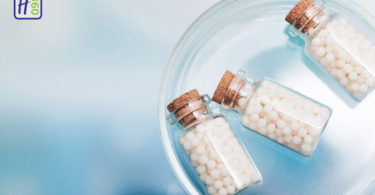Author
Dr.Suvarna Patil , Prof. Dept Homoeopathic case taking And Repertory , Guru Mishri Homoeopathic medical college & PG institute , Shelgaon , Tq. Badnapur , Jalna 431202
Dr.Supriya korde , (MD Hom part II) PG scholer , Dept.Homoeopathic case taking and Repertory , Guru Mishri Homoeopathic Medical college & PG institute , Shlegaon ,Tq.badnapur , Jalna 431202
Abstract
Two decades ago, Dr.Jan Scholten gave a great contribution to development of Homoeopathy with the understanding of theme or constitution of the element of the periodic table. A Periodic table are an essential tool in analyzing the case and finding the exact similimum remedy. Periodic table includes 18 columns (transverse) and 7 rows (horizontal). According to Scholten all elements in each row (horizontal) characterized by single common theme. The 18 columns can also called as stages as they represent the stages in the developmental cycle of the life like in the left side they are incapable , in the center they are successful and in the right they has giving up feeling. Scholtens element theory explains the idea to homoeopaths to find a similimum for patient. He has created a framework to take homoeopaths central approach and has opened up a great number of previously inaccessible remedies. This article resumes the Scholtens theory and introduce the concept of the periodic table theme with Material Medica and Repertory.
Keywords: periodic table, matera medica, repertory, rubrics
Introduction
Homoeopathy has a medical approach more than 200 years, is known as third most commonly used healing system in worldwide and for that reason it deserves the serious attention from the modern scientific community. Dr.Jan scholten renowned and eminent homoeopath has explained about theme of minerals in periodic table. The minerals have been used as homoeopathic remedy since beginning (ex. Sulp.), however until recently the major source of Materia Medica has been the plant kingdom. This scenario has changed with the contribution of Jan Scholten to understanding the homoeopathic constitution of the elements of the periodic table and the salts resulting from their combination.. According to Dr.Scholten the periodic table has proven to be reliable system to describe and predict the chemical and physical properties of the element as the chemical order of the element in the periodic table shows certain phases and sequences of the human development. The rows (horizontal) of periodic table can be seen replica of development of person starting from conception and ending in old age and death.
The main theme with exploring rubrics for each row are
The first three rows corresponds to childhood, starting from conception followed by birth and separation, and subsequently developing a separate identity. From the fourth row onwards shows thing related to adulthood m security, performing and taking responsibility.
Row 1
The main theme of this row is existence.
The person feels like ‘ Am I ? or I am not? Do I exist or not ? I am no one ? ‘
Rubrics (complete repertory)-
Conflict; between higher, consciousness and worriedly existence
Delusion; imagination, energy of powerful, moving around in the air
Forsaken feeling; isolation sensation as if
Delusion ; body ,separated from soul , as if
Row 2
The main theme of this row is identity
The person is like ‘who am I? Am I a part of something? Or Am I separate? Am I attached or detached? ‘
Rubrics (complete repertory)
Clinging of
Fear; of separation
Mind; sensitive, oversensitive,
General, noise, to; sudden
Row 3
The main idea of theme is Position or needs connection.
The person is like ‘I am out of the womb and now I have ego ‘choices are developed, monomania, dependent, and the idea of identity.
Rubrics (complete repertory)
Affection; desire
Attention; craves
Row 4
The main theme of this row is relationship, needs strength, energy
The person is in insecurity as if he done something wrong.
In terms of security here money, relationship, house, job and health. The person is like ‘ I know who I am ,but now I need safety and security.’
In terms of guilt for ‘having failed to do their job or task and they get blamed by others.’
Rubrics (complete repertory)
Delusion; imagination, money
Supporting a part (amel.)
Delusion; attached, of being
Delusion; crime he has committed
Row 5
The main theme of this row is creativity or something different,
The person is like ‘ I want to do something different, I want to be artistic , want to make something creative etc’
Rubrics (complete repertory)
Intellectual people
Creative
Guidance, need for
Row 6
The main theme of this row is leadership, or responsibility, withstand the high pressure like a ruler, and sacrifice for others, dictators.
The person is like ‘I want to think beyond myself, think about others.’
Rubrics (complete repertory)
Mind, looks , appearance, concerned about
Responsibility (agg)
Mind, over thinking (agg)
Row 7
The main theme of this row is high sense if duty or responsibility, feel overloaded, overburdened
The person is like ‘can’t hold myself to exist; you do it for me’ ‘I have save myself from disintegrating, run for it’
Rubrics (complete repertory)
Depressed; hopeless
Exhausted
Dreams; fear of major, terminal, incurable disease (like cancer)
Dreams; of being die
Anxiety; about to die
Then separately we have lanthanides. They are addition to and on existence of the other series of the periodic table. The lanthanides person one possess a high level of responsibility ,they feel responsible for world and that is why they became humanistic and live by their own series. They need to be free and act with self-control, and self-determination so they dislikes being controlled and manipulated. They have strong intellectual capacity and they have desire of wisdom, spirituality. In the periodic table each row is divided into 18 column (transverse) or stages. They corresponds to electron configuration in the outer shell of atom so they shows chemical behavior of the specific element. Scholtan has classifieds each stage according to their theme. The main theme of each column are,1) Beginning stage, 2) Finding a space stage, 3)Comparing stage, 4) Establishing stage, 5) Preparing stage, 6) Proving stage, 7) Practicing stage, 8) Perseverance, 9)Success in sight stage, 10)Success, 11)Pressure, 12)defending, 13)Retiring, 14)formal, 15)Loss, 16) Remembering, 17)Letting go, 18)rest.
Conclusion
Dr.scholtan introduced the concept of periodic table in constitution or themes and the other prominent homoeopath have depend the understanding of it. A remarkable improvement of scholtan’s approach was brought by very renowned homoeopath in modern era to analyzing case easily and finding the exact similimum for the case.
Reference
1. Scholten, J., Homeopathy and Minerals. 2013: Alonnissos Verlag.
2. Scholten, J., Homoeopathy and the elements. 2007: Alonnissos Verlag.
3. Scholten, J., The discovery of autonomy. Spectrum of Homeopathy, 2012. 3: p. 4-9.
4. Sankaran, R., Structure, experience with the Mineral Kingdom. 2009, Mumbai, India: Homoeopathic Medical Publishers.
5. Sankaran, R., Sankaran’s schema. 2011, India: Homoeopathic Medical Publishers.
6. Sankaran, R., The Soul of Remedies. 1997, Mumbai, India: Homoeopathic Medical Publishers.
7. Scholten, J., Element Theory – Periodic System of the Elements. 2008, Netherlands: Stichting Alonnissos.
8. Sankaran, R., Sensation in Homeopathy. 2004: Homoeopathic Medical Publishers; 2nd Edition
9. Scholten, J., Secret Lanthanides.2005: Stichting Alonnissos Publishers.





